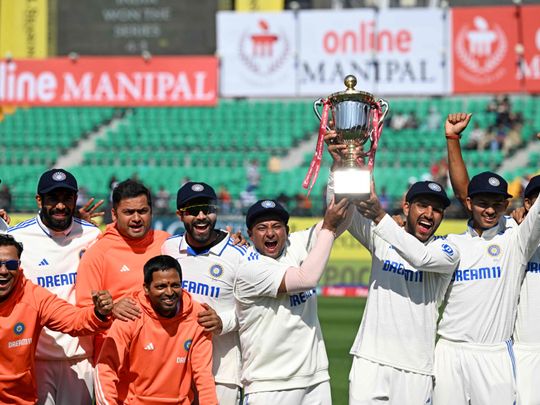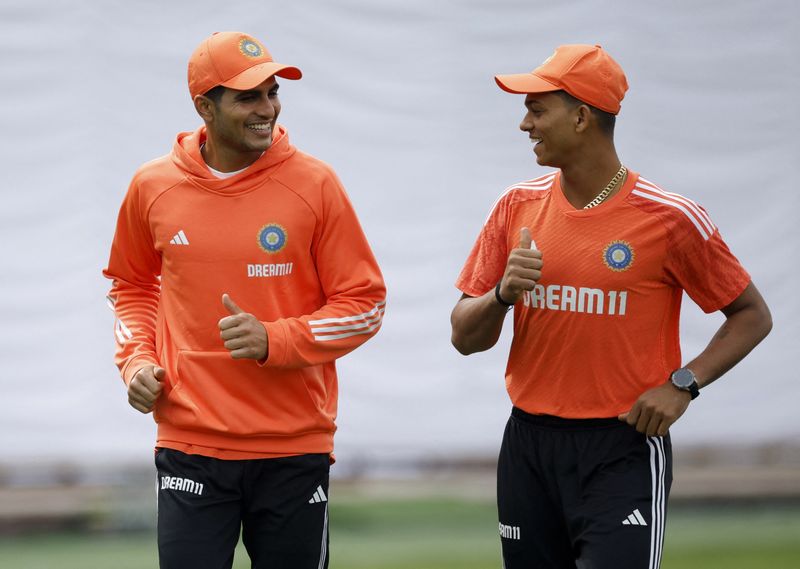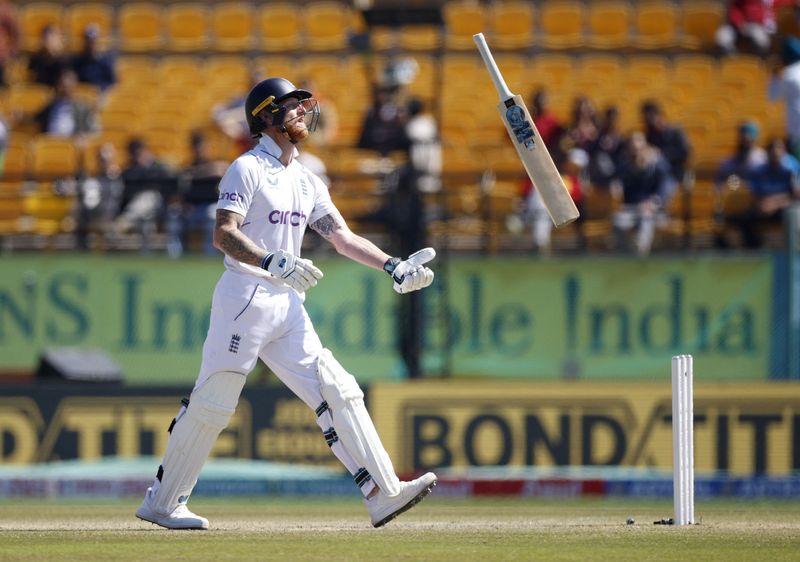
Dubai: India wrapped up the five-match series against England in style with spinner Ravichandran Ashwin capping his milestone 100th Test with a five-wicket haul in the second innings on Saturday at Dharamsala.
It was an entertaining series with plenty to cheer for the home fans, but it’s a shame that the high-octane series ended on the fourth day during all five occasions. A sad state of affairs in terms of skill sets that is required to grind out a session in Test match. England are more guilty of falling in their own trap after having not crossed the 300-run mark on seven of the 10 innings, finishing under 200 on three of those occasions.
The biggest plus for both England and India in this series is that both teams were able to blood a number of youngsters, which augurs well for the future of the longest format.
The 4-1 win for India, after losing the opener at Hyderabad, enabled the Men in Blue to extend their lead at the top of the World Test Championship table. India are currently the No 1 team in the One-Day International and Twenty20 rankings as well. Gulf News takes a look at the five key highlights from the just-concluded series.

1. India’s young talents rise to the occasion
Over the last decade, India didn’t get the opportunity to bring in too many youngsters and it is rightly so as many of the stars like Virat Kohli, Ravindra Jadeja, Rohit Sharma, Ashwin have all been cementing their place and climbing higher up in the world cricket ladder. But the absence of many leading players gave opportunities to young players like Yashasvi Jaiswal, Shubman Gill, Dhruv Jurel and Sarfaraz Khan have all grabbed their chances with both hands to put pressure on the returning stars in the future series. England too fielded some young talents, mainly bowlers. Left-arm spinner Tom Hartley stood out with his match-winning performance in the first Test, while Shoaib Bashir too impressed with 17 wickets in three Tests. Both, however, could not push enough to put the Indian batting on the mat.

2. Consistency in batting
England were a very settled batting, as against a rookie Indian line-up. However, the inexperienced Jaiswal, Gill, Sarfaraz and Jurel made telling contributions with the bat with skipper Rohit Sharma being the backbone of the home batting. Rohit and Gill have two centuries each to their credit while Jaiswal scored two double centuries. On the contrary, England batting have largely been inconsistent with most of them guilty of not converting their starts into big scores, a key aspect of Test cricket.

3. Home conditions
The Indian conditions certainly was to England’s disadvantage. But having trained in Abu Dhabi on pitches that will match the Indian wickets and after having won the first Test convincingly, England frittered away the advantage by playing into the hands of India with their Bazball approach. Just because Ollie Pope played sweeps and reverse sweeps to score 196 in the first Test doesn’t guarantee the same result every time and for every individual. England were guilty of gifting away their wickets due to their ultra-aggressive approach. A technically sound batter, Joe Root getting out to a reverse sweep gives an insight into the team’s mindset.

4. Relentless Indian bowling attack
The Indian bowling attack was hounding England like a pack of wolves, not giving any breather. Jasprit Bumrah, Mohammed Siraj, Ravindra Jadeja, Ashwin and Kuldeep Yadav formed a perfect partnership to go in for the kill and that put England batters under pressure. To wriggle out of the situation, when the visitors tried to go on the offensive, they invariably perished. Along with the aggressive Bazball approach, if the English batters had developed a strong defence, especially against the spin, the series could have produced some intriguing matches. On the other hand, England’s ace James Anderson did his best in least-favoured conditions to surpass his 700th Test wicket, but they were not able to bowl in partnerships and that allowed the Indian batters to come out of the pressure situations. The only time that England bowlers kept India under pressure all through was the second innings in the first Test.

5. Lack of form of key England batters
It’s unfortunate that four of England’s top batters were out of form and could not help their team reach a good total. Skipper Ben Stokes has the worst record after scoring 199 runs in 10 innings, closely followed by Jonny Bairstow (239). Both Pope and Root managed to score a century each, but both were extremely inconsistent. Pope scored a total of 315 runs with 196 coming in one innings in the first Test, while Root’s 320 had one 122 not out and 84 in the second innings of the final Test after scoring just 77 runs in the first six at the start of the series.












